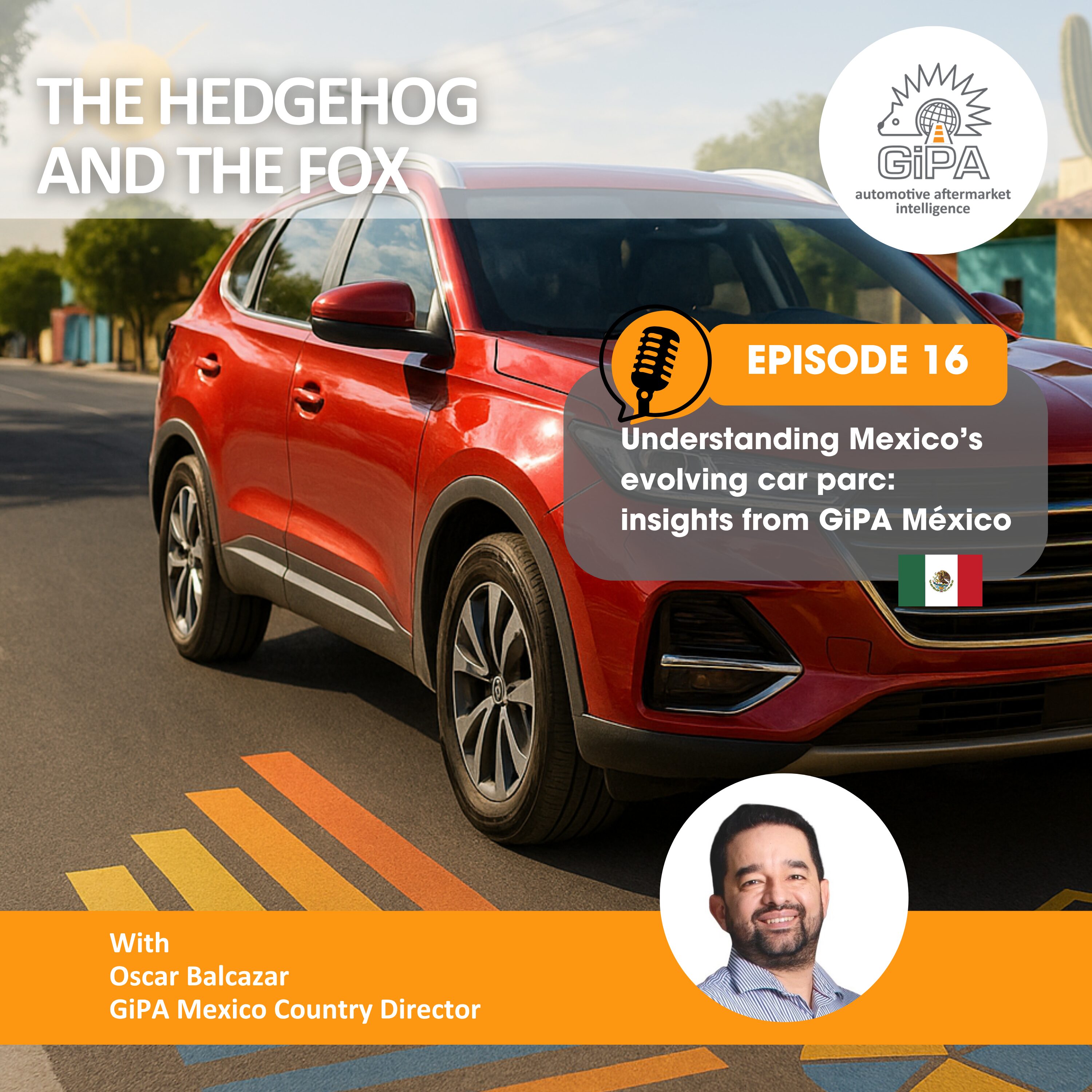Understanding Mexico’s evolving car parc: insights from GiPA México Categories: 2025, 2025, News Timelines: Argentina, Brazil, Central America, Chile, China, Colombia, France, Germany, India, Italy, Mexico, Morocco, Peru, Poland, Portugal, Russia, South Africa, Spain, Thailand, Turkey, United Kingdom, Vietnam
Announcement Date : 18 July 2025
The Mexican automotive aftermarket is undergoing a profound transformation driven by evolving vehicle demographics, the increasing presence of Chinese brands and broader structural shifts in consumer behavior and regulation.
On the latest GiPA podcast episode released on the channel “The Hedgehog and the Fox”, a closer look at recent developments reveals both immediate challenges and long-term opportunities for industry players across the value chain.
Chinese-Origin Vehicles: a rising force
One of the most striking trends in the Mexican market is the rapid rise in registrations of vehicles from Chinese manufacturers. These vehicles now represent approximately 10% of new registrations. While their presence is still concentrated within the dealership network, they are expected to progressively enter the independent aftermarket, where they will require a different approach in terms of cataloging, technical servicing and parts availability.
This shift is prompting distributors, parts manufacturers, and independent garages to prepare for the growing need to service this expanding fleet. The implications range from the diversification of product ranges to the need for updated diagnostics and training.
An aging car parc
Another defining feature of the Mexican car parc is its age: over 54% of vehicles on the road are now more than 10 years old. This aging trend, exacerbated by declining new car sales since 2016 and further intensified by the COVID-19 pandemic, has direct consequences for the aftermarket.
The slower renewal of the fleet means a greater focus on maintenance, repairs and replacement parts for older vehicles. However, the aftermarket must also consider the delayed entry of newer vehicles into the independent repair segment. For instance, the dip in vehicle sales between 2020 and 2023 is only now beginning to affect the flow of vehicles typically transitioning into independent servicing after 3–5 years on the road.
The role of informal imports
Mexico’s unique vehicle ecosystem also includes the widespread presence of so-called autos chocolate, used vehicles imported primarily from the U.S., often outside formal legal channels. While exact figures are elusive due to the informal nature of these imports, their presence significantly impacts the aftermarket, contributing to a fragmented parc and complicating efforts to build accurate vehicle databases or standardized catalogs.
Electric and Hybrid vehicles
In contrast to markets like Europe, the adoption of hybrid and electric vehicles in Mexico remains limited. Even under optimistic scenarios, these technologies are not expected to represent more than 5% of the total car parc within the next 10 to 15 years. Factors such as insufficient charging infrastructure, limited government incentives, and continued investment in fossil fuel infrastructure (including a newly constructed refinery) slow the pace of transition.
As a result, the medium-term future of the Mexican aftermarket remains closely tied to traditional combustion engine vehicles, a reality that sustains demand for conventional replacement parts and maintenance services.
Brand proliferation and the need for differentiation
The growing number of brands in the aftermarket, driven by new players, second lines from existing distributors and product diversification, is increasing competition and making brand differentiation more challenging. Lubricants, in particular, have seen a surge in available options, creating confusion for both end customers and intermediaries.
To stand out in this crowded landscape, companies must invest in market intelligence, brand health analysis and clear positioning strategies. Tools like GiPA’s Brand Health study offer valuable insights into how brands are perceived in terms of awareness, differentiation, and trust.
Looking Ahead: insight-driven strategies for growth
With Mexico’s car parc aging, diversifying, and becoming more complex, aftermarket professionals need to anticipate rather than simply react. This means embracing data-driven forecasting, monitoring changes in driver behavior and adjusting product and service strategies accordingly.
Understanding where the market is expanding, where volumes are shrinking, and which customer segments are underserved will be crucial in maintaining competitiveness in the years ahead.
The first LATAM Aftermarket Symposium, taking place on November 27th, will be a key opportunity to exchange insights, align strategies, and shape the future of the sector across the region. With the participation of GiPA’s Country Directors from Argentina, Brazil, and Mexico, automotive aftermarket professionals will gain access to essential data, trends, and market intelligence to navigate current challenges and turn emerging trends into strategic opportunities.













